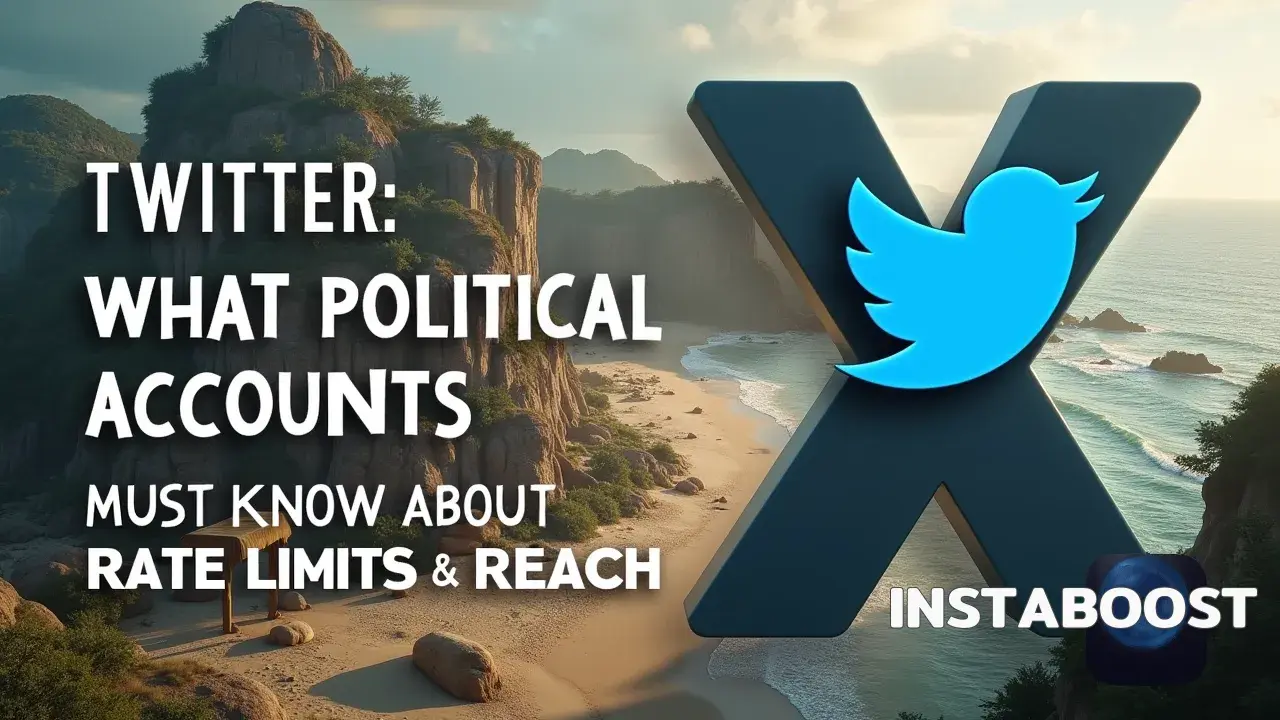What Political X (Twitter) Accounts Must Know About Rate Limits And Reach?
Political accounts can remain effective by understanding how rate limits and algorithmic reach shape visibility. Posting too frequently or engaging in repetitive actions risks throttling, while consistent, relevant participation supports conversation placement. Content that sparks meaningful interactions and aligns with platform signals tends to be surfaced more widely, though overuse of tactics can reduce impact. Focus on steady cadence, context-aware replies, and measurable engagement to sustain momentum.
Why Rate Limits Matter for Political Accounts
For people working on political campaigns or activism, Twitter is more than a place to share what you think. It’s where you try to get your ideas in front of the right people, shape how you’re seen, and find out what’s gaining traction. But one thing that doesn’t come up enough is how much Twitter’s behind-the-scenes mechanics – like rate limits and algorithms – actually shape what your followers end up seeing.
Rate limits are pretty straightforward: they set boundaries on how often you can tweet, reply, follow, or even scroll through your timeline in a certain time period. It might seem like a technicality, but if you’re running a political account, these limits can get in the way of keeping up with fast-moving conversations or responding quickly when something important happens. Sometimes, if you hit a rate limit, you can’t post right when you need to, or your replies might not go out while a topic is still hot.
On top of that, the way you interact on Twitter affects how the algorithm treats your account – sometimes rewarding your activity, sometimes pushing your posts further down. Services like X success services have appeared partly in response to these unpredictable obstacles, offering ways to navigate the platform’s shifting rules. It’s the sort of thing that can slowly chip away at your visibility, even if you’ve put time into crafting the right message.
If reaching people on social media really matters to you, it’s worth spending some time getting to know how these limits work, right along with thinking about your next hashtag or campaign slogan. It’s not always obvious when these limits will matter, but sometimes they do, and it can change the outcome in ways you don’t see coming.
If reaching people on social media really matters to you, it’s worth spending some time getting to know how these limits work, right along with thinking about your next hashtag or campaign slogan. It’s not always obvious when these limits will matter, but sometimes they do, and it can change the outcome in ways you don’t see coming.

Credibility Isn’t Just About What You Say – It’s About What Gets Seen
Staying credible on Twitter, especially with a political account, has less to do with luck than with paying attention to how the platform actually works. It’s easy to think that a clever tweet or a well-argued thread will carry itself, but whether real people actually see it depends on a lot of hidden factors. Twitter’s rate limits and filters can cut your reach with barely any warning. Sometimes you only notice when your replies and notifications drop off, even though you’re posting as much as you always have.
It’s not always obvious why this happens, but even people who’ve been active for a long time can run into these issues. Knowing how rate limits work, or just recognizing what might set off the algorithm, is part of being effective. The most thoughtful teams pay attention not only to what they’re saying, but also keep an eye on what’s happening behind the scenes – who’s actually seeing their posts, and whether anything’s changed.
Having active X followers can sometimes make it easier to notice shifts in engagement or reach. It can feel technical, but it really does affect how people see you. Tools like INSTABOOST are out there to help you understand your account’s standing, but even without extra tools, having some awareness of these basics can make a difference. There’s a lot going on in the background that shapes which voices get heard and which ones get lost in the noise.
Building Resilient Strategies Around Twitter’s Invisible Walls
Most of the time, you don’t notice when things are working – especially if you’re running a political Twitter account. It’s easy to miss if the platform quietly starts limiting how far your posts go or puts caps on your activity. You might go a while before realizing you’re not reaching as many people, or that your replies aren’t showing up. Planning posts ahead, and matching messages to when your followers are online, can help dodge some of those limits. Spreading tweets out matters too, so you stay under the radar with rate limits. Watching your analytics helps; even a small dip in engagement might mean something has changed.
Instead of firing off as many tweets as possible, it’s usually better to focus on what gets real responses – starting a thread, replying in a way that keeps a conversation going. That sort of thing seems to keep your posts visible, and doesn’t set off any alarms. There are tools now for things like instant delivery likes on X, but automation only does so much.
Tools like INSTABOOST can help track things, but sometimes the platform’s own limits are just a sign that it’s time to change how you’re posting. Search visibility and “Twitter follower retention” aren’t just about what you say – they depend just as much on how the system handles your account. If your reach gets throttled, you can lose your audience without much warning. Small signals, like fewer impressions or missing replies, are worth noticing. It’s more about staying aware and adjusting as you go, not assuming it’s all fine just because nothing looks broken.
Questioning the Logic Behind Twitter’s Rate Limits
From what I’ve seen, even dating apps seem to have more predictable systems than Twitter’s rate limits. When you’re running a political account, the way Twitter handles these restrictions can feel a little all over the place – it’s hard to know what’s going to get flagged or slowed down. Staying active and responding quickly is important, but sometimes you run into sudden blocks or see your engagement drop for reasons that aren’t clear.
Twitter says these limits are supposed to help with safety and fairness, but if you’re actually trying to keep up a conversation – especially about something timely or controversial – it gets frustrating fast. You might spend time on a thoughtful reply, only for it to get buried, while something offhand suddenly gets attention, and you don’t really know why. The rules shift often and there’s not much explanation for any of it, so you end up guessing what’s allowed and what isn’t. Other platforms at least show warnings or give you some numbers to work with, but with Twitter, it sometimes feels like you’re in the dark.
It reminds me of those safe views for tweets things that float around – just another layer you end up thinking about when trying to understand how your posts are actually being seen. It’s not just annoying on a technical level – the way these limits play out can affect who sees your posts and whether anyone trusts your account in the first place. If you want to build up a real following, it’s hard to believe that simply posting good material will be enough. You start to wonder about the system itself, whether it’s fair or even working the way it’s supposed to. The more you pay attention to these patterns, and the more you’re willing to push back or try different approaches, the easier it is to keep some kind of real conversation going – even as everything keeps shifting.
Turning Rate Limits Into Reach: Your Next Moves
Imagine it like carrying a small stone in your pocket – something you notice from time to time, but it’s not really heavy. The thing about Twitter’s rate limits and the way some tweets don’t reach as many people isn’t necessarily something to stress over. It’s more about understanding a part of how the platform works, and using that to your advantage. When you’re managing a political account, it helps to see these oddities as signals rather than setbacks. It’s worth keeping an eye on your analytics; if you start seeing a sudden dip in replies or impressions, it doesn’t always mean your message was off.
Sometimes it’s Twitter itself putting on a limit behind the scenes. It’s better to test out different post times or formats when things are quieter, not waiting until everyone’s watching during campaign season. That way, if a tweet you care about gets less engagement than usual, you can try changing how you say it, use different hashtags, or shift the timing, instead of just repeating yourself. Even though rate limits can seem arbitrary, if you look at your data over several weeks – maybe even when you’re browsing ideas to maximize retweets Twitter – you’ll usually find some patterns.
It’s also smart not to rely only on Twitter – building up your email list or other ways to reach people helps in case the platform changes something unexpectedly. Tools like INSTABOOST can be useful for spotting when your reach drops off, but really, adapting comes down to staying open and watching what’s happening, rather than assuming everything is set in stone. It’s less about fighting the system and more about noticing these small details, the ones that don’t always have a clear explanation.















